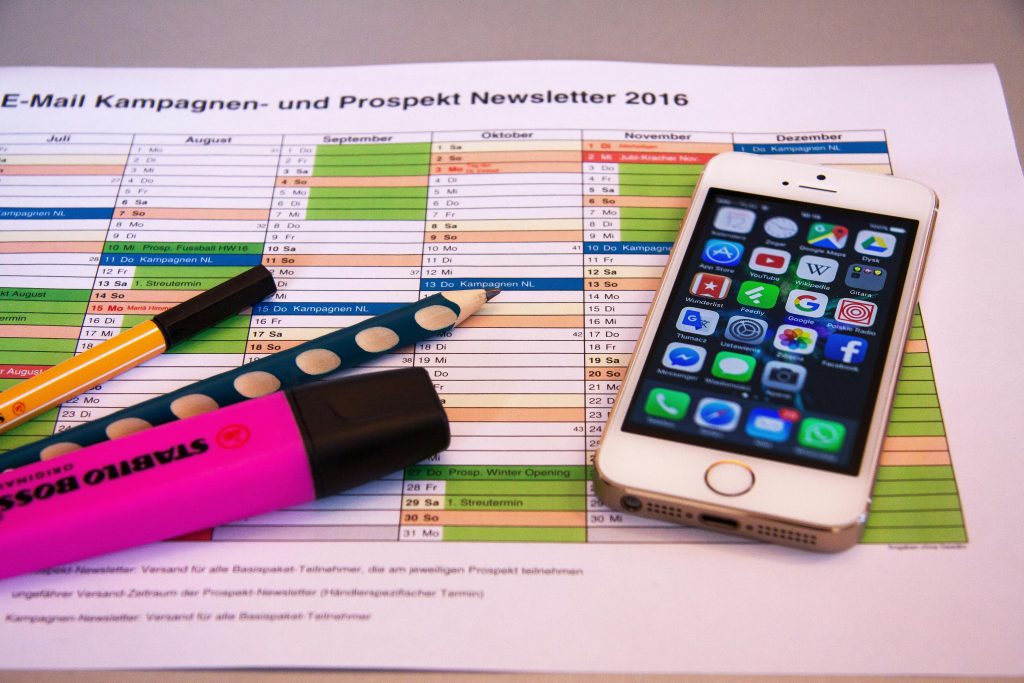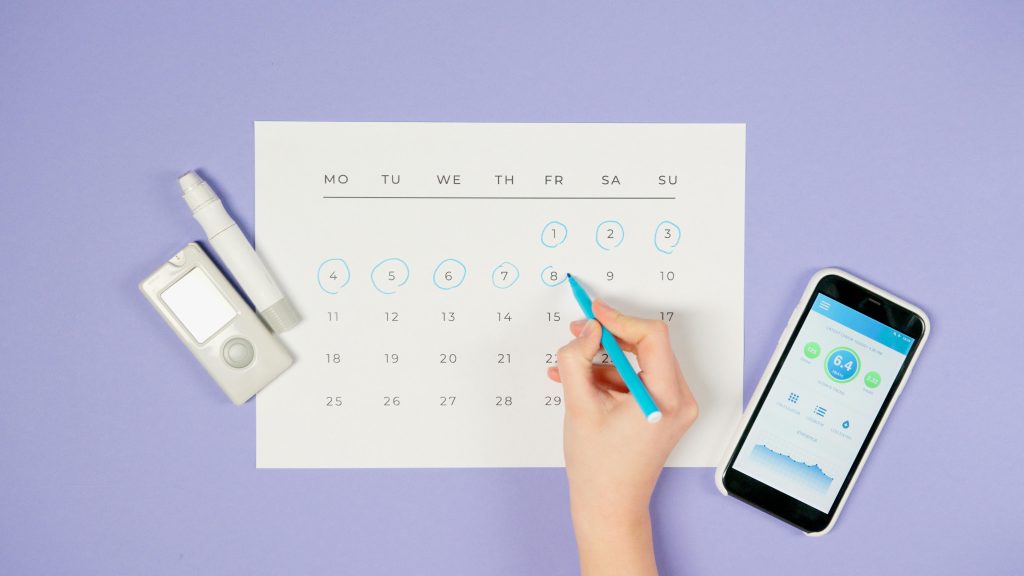Introduction
In today’s agile product development landscape, waiting weeks for lengthy user research can stall innovation. A rapid customer interview—a concise, focused conversation typically lasting 15–20 minutes—enables you to quickly gather actionable insights, validate assumptions, and iterate your solution in near real-time. Whether you’re refining a value proposition, uncovering pain points, or gauging concept viability, this method helps you move fast without sacrificing quality. In this detailed guide, we’ll walk through each phase of the process—planning, recruiting, interviewing, and synthesizing—providing practical tips, real-world examples, and templates to ensure your rapid interviews deliver maximum impact with minimal overhead.
1. Clarify Your Objective and Craft Key Questions
A. Define a Single, Crystal-Clear Objective
Every rapid customer interview must revolve around one main goal. Trying to answer too many questions in one session dilutes focus and confuses both you and the participant. Common objectives include:

- Validating a Value Proposition or Feature: Do users truly need and value the feature you’re proposing?
- Uncovering Core Pain Points: What frustrations do users experience in a specific workflow or task?
- Assaying Concept or Prototype Viability: How do users react to a rough mockup or pitch?
Example Objective: “Understand how mid-sized e-commerce managers manually reconcile daily sales data across multiple channels, and identify their biggest frustrations.”
Why a Sharp Objective Matters
- Keeps the Interview Short and Focused: Limiting to one theme ensures you don’t run over time or lose participant engagement.
- Guides Your Question Design: Every question ties back to the central objective, making it easier to interpret and act on insights.
- Informs Participant Selection: You’ll recruit only those who can speak directly to that topic, maximizing relevance.
B. Draft 3–5 High-Impact, Open-Ended Questions
With your objective in hand, craft a handful of questions that elicit real-world stories and specifics. Each question should:
- Address a Different Angle of the same theme (current behavior, pain points, tool usage, workaround strategies).
- Avoid Jargon or leading language.
- Encourage Storytelling rather than yes/no responses.
Sample Questions (for the E-commerce Reconciliation Example):
- “Walk me through how you reconcile sales data across your online store, Amazon, and third-party marketplaces each day.”
- Follow-up Prompts:
- “Which tools do you rely on at each step?”
- “How long does each step take?”
- Follow-up Prompts:
- “Can you pinpoint the most frustrating or time-consuming part of that workflow? Describe a recent incident.”
- Follow-up Prompts:
- “What were the consequences—errors, delays, or customer complaints?”
- “How did you feel at that moment?”
- Follow-up Prompts:
- “What workarounds or manual processes have you implemented to simplify reconciliation?”
- Follow-up Prompts:
- “Why did you choose that spreadsheet-based approach instead of an integrated tool?”
- “How effective has that workaround been over time?”
- Follow-up Prompts:
- “If you could snap your fingers and change one thing about your reconciliation process, what would it be?”
- Follow-up Prompts:
- “Why is that change so important?”
- “What impact would it have on your day-to-day work?”
- Follow-up Prompts:
Tips for Question Crafting
- Start Broad, Then Narrow: Begin with an open invitation to describe “the process” before zooming into specific pain points or tools.
- Avoid Hypotheticals Too Early: Early in the interview, focus on actual behaviors. Save “ideal scenario” or “magic wand” questions for later, once you understand their reality.
- Be Prepared with Prompts: Under each question, list quick prompts (e.g., “time taken,” “tools used,” “team roles involved”) to keep the conversation flowing.
2. Recruit and Screen Participants Quickly
A. Identify Your Target User Profile
Clarify who can best speak to your objective. In our example, participants are:
- Titles/Roles: E-commerce managers, operations leads, finance analysts at mid-sized online retailers (50–200 employees).
- Experience Level: At least one year managing multiple sales channels; familiarity with basic financial reporting.
- Tool Usage: Current use of spreadsheets, accounting software, or third-party reconciliation tools.
Why Precise Screening Matters
- Maximizes Relevance: Every 15–20 minute interview should yield highly targeted insights.
- Avoids “Noise” from Non-Ideal Profiles: A general admin assistant or a CEO without day-to-day involvement won’t provide the same level of detail.
B. Leverage Existing Networks and Tools
- Internal Referrals and Warm Introductions:
- Ask colleagues, existing customers, or industry contacts to suggest suitable participants. Personal intros cut through cold outreach.
- Online Communities:
- Post a brief call for participants on Slack groups, LinkedIn groups, or specialized forums (e.g., r/ecommerce on Reddit, GrowthHackers).
- Keep your message succinct: “Seeking 15–20 min conversation with e-commerce managers at mid-sized retailers. No sales pitch—just a quick chat about how you reconcile daily sales. Gift card for participation. Reply if interested!”
- Customer Mailing List:
- If you have an email list of users, send a brief note: “Help us improve our product by joining a 20-minute interview. We’ll send you a $25 Amazon gift card for your time. Apply here [link].”
C. Screen via a Short Pre-Interview Survey
Use a one-page form (Google Forms, Typeform) with no more than 3–4 questions to verify fit:
- “What’s your job title and primary responsibilities?”
- “Which tools do you currently use to reconcile daily sales data?”
- “How many hours per week do you spend on manual reconciliation tasks?”
- “Are you open to a 15–20 minute video call at one of these times?” (Provide 3 time slots.)
Screening Benefits:
- Ensures you avoid no-shows by confirming availability upfront.
- Filters out those whose workflows don’t align with your objective.
- Provides basic context so you can personalize the interview.
D. Incentivize and Schedule Efficiently
- Incentives: Offer a $20–$50 e-gift card or early access to your beta product—whatever fits your budget and industry norms.
- Scheduling Tools: Use Calendly or Google Calendar appointment slots to let participants self-book within your available windows. Send a confirmation email with the meeting link and a brief reminder 24 hours before.
3. Prepare Your Interview Guide and Logistics
A. Draft a Lightweight Interview Script
While you don’t want to read verbatim, having a structured flow ensures consistency across interviews. Structure your guide with:

- Introduction (2 minutes)
- Greeting & Context: “Thanks for taking the time to talk today. My name is [Your Name], and I’m a [role/team] at [company]. Our goal is to understand how e-commerce managers like yourself handle daily sales reconciliation.”
- Interview Format & Timeline: “This will be a 15–20 minute conversation. There are no right or wrong answers; we’re just interested in your honest feedback. With your permission, we’d like to record the session for note-taking purposes. Is that okay?”
- Confidentiality Reassurance (if applicable): “Any information you share is confidential and used only for internal research, so feel free to speak openly.”
- Warm-Up Question (1–2 minutes)
- “Can you give me a quick overview of your role and how long you’ve been managing sales and finance tasks?”
- Core Questions (10–12 minutes)
- Use the 3–5 focused questions drafted earlier, each with built-in follow-up prompts.
- Closing and Wrap-Up (2–3 minutes)
- “Is there anything we haven’t covered that you think is important?”
- “Do you have any questions for me?”
- “Thank you so much for your time. Here’s the link to your gift card.”
B. Logistics Checklist
- Platform Setup: Confirm your video conference tool (Zoom, Google Meet) is working. Test microphone, camera, and recording function.
- Note-Taking Template: Prepare a shared Google Doc or Notion page with sections for:
- Participant Details (Name, Role, Company, Tools Used)
- Key Quotes (verbatim when possible)
- Pain Points / Observations
- Potential Solutions / Wishes
- Confidence Rating (1–5) for each insight
- Backup Plan: If the video call fails, have a phone number to switch to an audio call.
- Time Management: Add a visible timer or clock to gently keep track of elapsed time without staring at the participant.
4. Conducting the Interview: Best Practices
A. Build Quick Rapport
- Natural Opener: Start with a genuine compliment or relate to their context: “I noticed on LinkedIn you recently scaled your online store’s SKU count from 500 to 1,000—congratulations! That must have impacted your reconciliation process.”
- Casual Warm-Up: Ask a light personal question (“How’s your week going?”) but transition swiftly to keep within the 20-minute window.
B. Active Listening and Minimal Interruption
- Let Them Speak Fully: Resist the urge to jump in mid-sentence. If they go quiet, a brief, neutral “Mm-hmm” or “Go on” prompt encourages elaboration.
- Paraphrase and Confirm: After a longer response, summarize: “So you’re saying you spend about two hours daily exporting CSVs from your marketplace dashboards and merging them—did I get that right?”
- Use Neutral Phrasing: Avoid yes/no or leading questions. Instead of “Did you find that feature confusing?” ask, “How did you feel when you first tried that feature?”
C. Time-Box Each Section with Gentle Guidance
- Check the Clock Mentally: Aim to spend no more than 3–4 minutes on each core question.
- Interject When Necessary: If the participant dives into a long anecdote unrelated to your objective, say politely: “That’s very interesting—thank you. To make sure we cover all our main questions in the time we have, let’s move on to how you currently reconcile data.”
- Use Transitional Phrases: E.g., “Let’s switch gears and talk about…”, to nudge the conversation back on track.
D. Handle Silent Pauses and Hesitation
- Silent Comfort: If someone pauses for 3–5 seconds, let the silence stand; people often fill it with deeper insights.
- Encourage Reflection: “Take a moment if you need—no rush.”
5. Synthesize Insights Immediately After Each Call
A. Conduct a Post-Interview Debrief (5 Minutes)
Right after ending the call, spend 2–3 minutes jotting down:

- Top 3–4 Takeaways: Brief, bullet-point summaries.
- E.g., “Manual merging of CSVs from Amazon and Shopify takes ~2 hours/day.”
- Most Striking Quotes: Verbatim if possible (for authenticity).
- E.g., “‘I dread Friday afternoons because I know I’ll be wrestling with mismatched SKUs.’”
- Surprising Insight or Contradiction: Something that challenges your assumptions.
- E.g., “They prefer ad-hoc Excel macros to specialized SaaS tools—even though they know macros break often.”
- Confidence Rating (1–5): How strongly you believe this insight reflects a broader trend.
- E.g., “3/5 for ‘Use of macros over SaaS’ since only one participant mentioned it so far.”
Use your standardized note-taking template to capture these details in a shared doc or spreadsheet.
B. Identify Emerging Themes Across Multiple Interviews
After 3–5 interviews, create an Affinity Map to cluster insights:
- Extract Key Points: Copy your bullet points and quotes onto digital sticky notes (Miro, Mural, or a physical whiteboard).
- Group by Theme: Look for natural clusters such as “Time Spent,” “Preferred Tools,” “Pain Points,” and “Desired Improvements.”
- Validate Frequency vs. Impact:
- Frequency: How many participants mentioned each theme?
- Impact: How disruptive or costly is each pain point?
Example Clusters for E-commerce Reconciliation:
- Time Spent Manually Merging Data (4/5 participants)
- Reliance on Custom Excel Macros (2/5 participants)
- Frustration with Data Mismatches Leading to Refund Errors (3/5 participants)
- Desire for Automated Channel Sync (5/5 participants)
Rank clusters by a simple 2×2: “High Frequency & High Impact” (immediate priority) vs. “Low Frequency & Low Impact” (deprioritize).
6. Turn Insights into Actionable Next Steps
A. Refine Your Hypotheses and Roadmap
- Hypothesis Example (Pre-Interview): “Users need a unified dashboard that syncs sales across all channels automatically.”
- Post-Interview Validation:
- Confirmed: 5/5 want automation.
- Nuance: 2/5 prefer building in-house macros despite limitations.
Adjusted Hypothesis
“Users want an automated reconciliation dashboard but require spreadsheet export functionality to maintain custom macros.”
- Roadmap Updates:
- Immediate: Build a lightweight prototype with channel-sync and CSV export.
- Next: Enhance data-matching algorithms to reduce mismatched SKUs.
- Later: Integrate user-defined macro templates or formula presets.
B. Create a Low-Fidelity Prototype or Concept Video
- Sketch Wireframes: Use a whiteboard or tools like Figma to draft a reconciliation dashboard UI with:
- Channel selection toggles (Shopify, Amazon, eBay).
- Real-time sync button.
- CSV export option with macro support.
- Film a 60–90 Second Screencast: Narrate how the prototype solves top pain points (e.g., “With one click, you pull consolidated data; if you need an Excel macro, just click Export”).
- Share with Early Adopters: Send the video plus a brief survey (3–4 follow-up questions) to your interview pool for rapid feedback before diving into development.
C. Plan the Next Round of Rapid Interviews or Usability Tests
- New Objectives:
- Validate Prototype Utility: “Does this mockup actually reduce your manual reconciliation steps?”
- Assess Macro Integration: “How effective is the CSV export for your existing macros?”
- Revised Questions:
- “What’s your first impression of this dashboard layout?”
- “Click through this flow to export a CSV—does it meet your macro needs?”
- “What else would you change before considering purchasing?”
- Participant Pool Expansion: Recruit additional e-commerce managers who haven’t used macros or have different tech stacks (e.g., custom ERP).
7. Maximize Efficiency with Tips and Templates

A. Automate Scheduling and Reminders
- Calendly: Set your availability for 1–3 hour blocks each morning. Participants pick a 20-minute slot—no back-and-forth emails.
- Google Calendar: Create a public event link with placeholders for participant name, job title, and Zoom link.
- Automated Reminders:
- 24 hours prior: “Looking forward to speaking tomorrow at 2 PM. Please join via this link: [Zoom Link].”
- 1 hour prior: “Friendly reminder: Our interview starts in one hour. Can’t wait to chat!”
B. Use a Standardized Note-Taking Template
Create a shared document with clear sections to ensure everyone takes notes uniformly. Example structure:
| Section | Content |
|---|---|
| Participant Details | Name, Role, Company, Years in Role, Tools Used |
| Warm-Up Summary | Short bullet points on how they introduced themselves and context they provided |
| Key Quotes | 3–5 verbatim quotes that capture emotions or unique phrasings |
| Pain Points | Bullet list of major frustrations, each with an estimated “how often” or “time wasted” metric |
| Current Workarounds | How they solve issues today (e.g., custom Excel macros, manual downloads, third-party tools) |
| Desired Improvements | Things they wish existed (e.g., “One-click data sync,” “Error detection alerts”) |
| Confidence Rating | 1 (low confidence/rarely mentioned) to 5 (high confidence/universal across interviews) |
| Next Steps | Immediate actions (prototype changes, follow-up questions), long-term considerations (roadmap features) |
Benefits of a Robust Template
- Consistency: Easier to compare notes across interviews.
- Speed: Note-taker doesn’t have to create a new structure each time—just fill in the blanks.
- Clarity: Clear sections minimize confusion when reviewing weeks later.
C. Keep Interviews Strictly Time-Boxed
- Use a Timer or Stopwatch: Place a visible countdown on your screen (Zoom’s built-in timer or a separate app).
- Segment Time Proportionally:
- Intro + Consent: 2 minutes
- Warm-Up: 1–2 minutes
- Core Questions (3–5): 10–12 minutes total (roughly 2–3 minutes per question with follow-ups)
- Wrap-Up & Next Steps: 2–3 minutes
- Politely Wrap Up: If time runs short, say: “We’re at 18 minutes; I have two remaining quick questions. I’ll ask them briefly so we can conclude on time.”
- End on a Positive Note: Thank them sincerely and remind them of the incentive delivery. This leaves a good impression for potential follow-up.
8. Common Pitfalls and How to Avoid Them
| Pitfall | Impact | Solution |
|---|---|---|
| Asking Too Many Questions | Interviews run over time, losing focus on objectives | Limit to 3–5 high-priority questions. Use prompts sparingly. |
| Leading or Biased Questions | Data skewed by interviewer assumptions | Phrase questions neutrally (“How do you…?” not “Don’t you find it frustrating when…?”). |
| Recruiting the Wrong Participants | Insights irrelevant or unrepresentative | Screen rigorously. Use specific role/title, tool usage, and experience level as filters. |
| Scheduling Back-and-Forth (No Automation) | Time wasted coordinating availability | Use Calendly or shared calendar slots; automate confirmations and reminders. |
| Capturing Incomplete Notes | Missed insights; difficulty synthesizing data | Have a dedicated note-taker using a standardized template; record audio/video (with permission) to fill gaps. |
| Going Off-Script Too Early | Strays from core objective | Use your script as a guide. If new topics arise, note them for a later deep dive. |
| Ignoring Nonverbal Cues (on Video) | Missing emotional or behavioral signals | Pay attention to body language or tone changes. Jot down observations (“participant hesitated,” “smiled”). |
| Delaying Synthesis Until All Interviews Complete | Insights lose freshness; delayed product decisions | Synthesize after each interview; cluster themes in real time to inform next sessions. |
9. Scaling Your Rapid Interview Process Over Time

A. Build a Participant Repository
- Maintain a Database (e.g., Airtable, Google Sheets) with:
- Name, Role, Contact Info, Industry/Company Size, Tools Used, Topics They Can Speak To
- Tag Each Person by which aspects they’ve discussed—“expense reconciliation,” “payment processing,” “customer support workflow.” This makes recruiting follow-up or specialized interviews much faster.
B. Establish a Continuous Feedback Loop
- Monthly “Lightning Round” Interviews: Allocate 1–2 hours per month to conduct 3–5 rapid interviews on new features or emerging questions.
- Share Weekly Summaries: After each batch, circulate a 1-page summary with top 3 insights, direct quotes, and suggested action items to stakeholders (product, design, marketing).
C. Train Additional Team Members in Interviewing Skills
- Host a Brown-Bag Workshop: Teach basic user-interview techniques—active listening, non-leading questioning, note-taking best practices—so more team members can conduct rapid interviews as needed.
- Create a “Rapid Interview Kit”: Include the script template, question bank examples, screening survey template, and scoring rubric for quick launch by any trained colleague.
10. Conclusion
A rapid customer interview is a powerful, low-overhead method to gather high-value user insights and accelerate product development. By rigorously defining your objective, recruiting the right participants, preparing a concise—but flexible—interview guide, and synthesizing results immediately, you’ll gain clarity on real user needs without lengthy delays. Remember to iterate: refine your hypotheses based on new data, prototype quickly, and continue interviewing to validate each iteration. Over time, building a sustainable rapid-interview practice—complete with a participant repository, standardized templates, and cross-functional training—will embed user-centric decision-making into your company’s DNA. Start today with three 20-minute conversations, and watch how a few focused questions unlock rich insights that drive your product forward.

